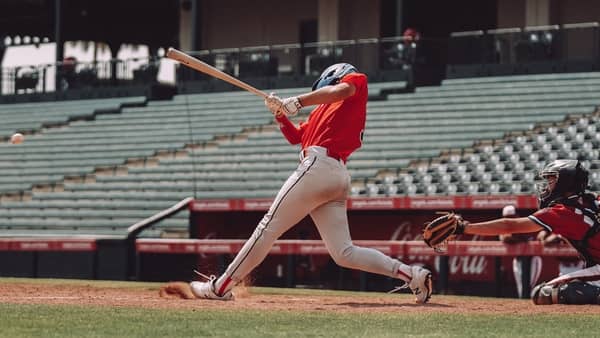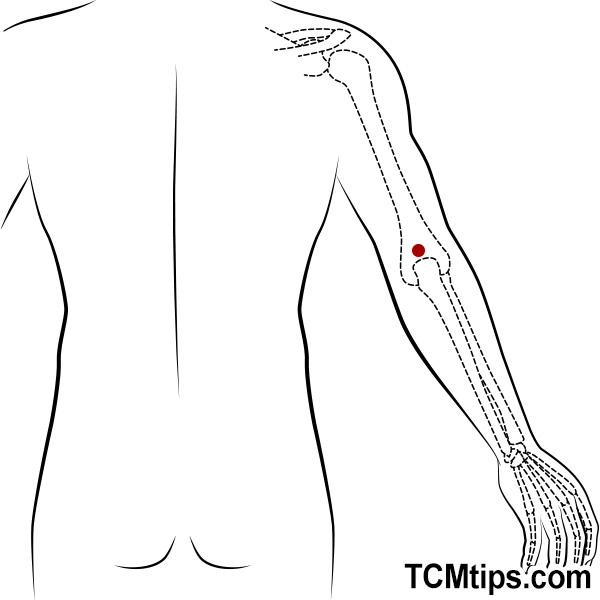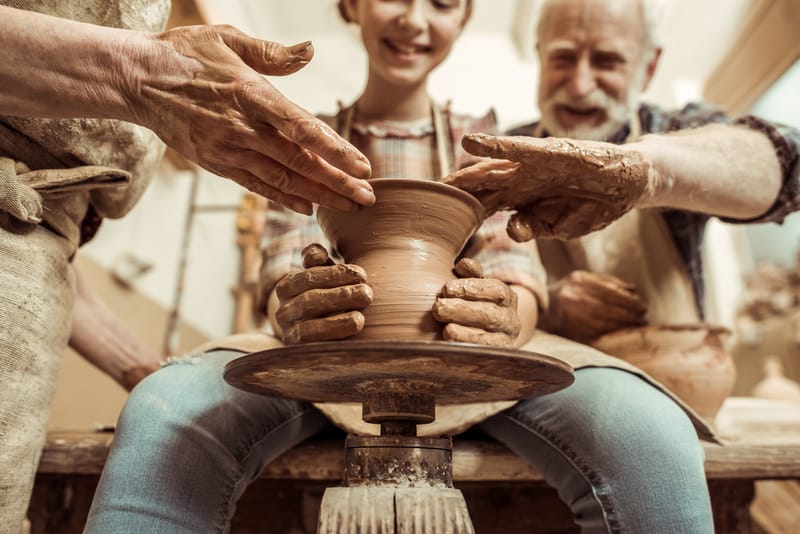Have you ever suffered from tennis elbow? Even if you’re not a fan of the game, it’s not uncommon to experience pain or inflammation in the elbow. In fact, despite the name, tennis elbow affects up to three percent of the general population every year—many of whom have never even picked up a racquet. Any activity that places strain or repetitive stress on the muscles attached to the elbow can lead to tears and inflammation close to the lateral epicondyle—the bony lump on the outside of your elbow.
You’ve probably heard of “tennis elbow,” but what about “baseball elbow” or “golf elbow?” While practicing your backhand stroke places greater strain on the lateral epicondyle, swinging a golf club or baseball bat impacts the medial epicondyle—the bony lump on the inside of the elbow. Anything from carrying a heavy shopping bag to using a computer mouse for extended periods can place strain on the flexor tendons, eventually leading to injury or inflammation of the tendons in the elbow. Before you resort to steroid injection or surgery, you may want to give acupuncture for elbow tendonitis a try.
What Are The Symptoms Of Elbow Tendonitis?
The most obvious symptom of elbow tendonitis is that it hurts! Normally, you will not experience much pain until you move your arm or flex the elbow joint. You should feel fine when holding an object, but any twist of the arm, such as when squeezing a rag or turning a door handle, will cause lateral elbow pain or tenderness. And if something knocks against your elbow, you’ll likely feel severe pain.
A sure-fire sign that you have golf elbow, or medial epicondylitis, is if you experience pain when grasping an object between the ring finger and the little finger. This action places stress on the muscles on the inside of the elbow, causing pain. The pain can travel down from the elbow to affect your forearm and your wrist. Even if you take a break from sports or other activities, the pain may take a long time to subside. In the meantime, acupuncture for elbow tendonitis may provide pain relief and is certainly a healthier option than regular usage of over-the-counter pain medications.
Is Tendonitis a Permanent Condition?

Usually not. In most cases, elbow tendonitis lasts between six months and two years, and around 90% of people make a full recovery within one year. The standard treatment of tennis elbow and golf elbow is simply to rest the overworked muscles to give them a chance to recover naturally. If you have to use your arm for work, you can wrap the injured area or use a sling for support.
While using steroid injections or Non-Steroidal Anti-Inflammatory Drugs (NSAIDs) may reduce suffering in the short term, these medications do not treat the root cause of the problem and can have significant negative side effects, including gastrointestinal issues, weight gain, and insomnia. Using acupressure or acupuncture for elbow tendonitis, on the other hand, can act as an excellent analgesic without any negative effect on your health. In fact, the side effects of acupuncture treatments, such as improved blood circulation and stress relief, are on the whole beneficial.
Acupuncture and moxibustion treatments can be applied to the area around the elbow to ease tension in the muscles and ligaments and improve blood flow, bringing healing nutrients to the injury. As well as providing immediate pain relief, there is increasing evidence that acupuncture for tennis elbow and golf elbow may help to improve movement and flexibility in patients. In one case study, a retired male athlete suffering from chronic pain due to a golfer’s elbow reported a significant increase in mobility after a single session of dry needling.
In a controlled clinical study, 23 patients with chronic epicondylitis were treated with real acupuncture, while 22 patients received sham acupuncture. While both groups showed significant reductions in pain and improvements in the function of the arm, the effect was shown to be greater when real acupuncture points were selected and stimulated compared to more general, non-specific acupuncture treatments in the sham acupuncture group.
In another controlled study conducted at the Guangzhou Physical Education Institute, patients suffering from lateral epicondylitis were treated with either massage or acupuncture or a combination of the two. Those treated with both traditional massage and acupuncture for elbow tendonitis showed the greatest improvement, with the majority being completely cured after twenty treatments. This study clearly demonstrated the efficacy of acupuncture for tendonitis in the elbow over conventional treatment.
What are the Acupuncture Points for Elbow Tendonitis?
Acupoint: PC-7 (Other Names: Pericardium-7/Da Ling/Great Mound)

This acupoint on the pericardium meridian is useful in the treatment of many conditions relating to the hand and the arm. Stimulation here wakes up the nervous system and relieves symptoms of numbness in the hand and the wrist. Activating the Da Ling, as it is known in Traditional Chinese Medicine, also relieves pain and inflammation in the arm, making it effective in both acupuncture for hand pain and acupuncture for wrist tendonitis.
If you want to try acupressure for elbow tendonitis at home, first locate PC-7 by turning your palm face up and bending your wrist slightly upwards. PC-7 is located at the crease of the wrist, between the two central tendons in the arm that should now be clearly visible. Apply gentle pressure for a few minutes on both arms.
Acupoint: SI-8 (Other Names: Small Intestine-8/Xiao Hai/Small Sea)

This acupoint on the small intestine meridian is especially useful in the treatment of golf elbow, arthritis, and tendonitis. It is located on the medial aspect of the elbow, in the depression between the bony prominence on the upper end of the ulna and the medial epicondyle of the humerus. Pressing this acupoint with the elbow flexed can be very effective, but remember to be gentle as pressing too hard can cause pain or numbness.
Stimulation of the Xiao Hai provides fast relief from stiffness and inflammation, reduces hand and elbow pain, and improves flexibility in the joints.
Acupoint: TE-10 (Other Names: Triple Energizer-10/Tian Jing/Upper Well)

Activating the Tian Jing acupoint improves blood flow from the shoulder to the arm, providing relief from stiff shoulders and lateral elbow pain caused by lateral epicondylitis. While other acupoints on the Triple Energizer meridian, such as TE-14 and TE-15, are commonly employed in acupuncture for shoulder tendonitis, TE-10 is a more effective acupressure point for elbow tendonitis. Combining acupressure massage at TE-10 with physical therapy can speed up your recovery and provide relief from chronic tennis elbow pain.
If you flex the elbow slightly, you can find the Tian Jing in the depression two finger-widths above the top of the elbow. Aside from its usefulness in acupuncture for tendonitis in the elbow, TE-10 is also an effective acupoint for treating headaches and migraines and providing relief from anxiety.
Acupoint: EM-38 (Other Names: Zhou Jian)

In acupuncture for elbow tendonitis, the elbow region can be needled directly in order to release tension in the muscles and tendons and improve blood flow to the injured area. EM-38, known as the Zhou Jian or “Tip of the Elbow” is an effective acupoint for lateral epicondyle pain located on the outer elbow, at the tip of the olecranon when the arm is bent.
Stimulation of EM-38 also relieves congestion in the body, reduces phlegm, and eases swelling and inflammation.

Try our Anti-Aging Gua Sha Tool designed to bring out your skin’s natural glow.
Best Gua Sha Product- Anti-Aging: The tool is designed to target 11 specific aging signs such as wrinkles and sagging skin. By following the 7-step routine, users can improve skin firmness and reduce fine lines naturally.
- Enhances Skincare Routine: It works effectively with serums and lotions, boosting absorption and efficacy of skincare products.
- Visible Skin Improvement: Users can expect a smoother complexion, reduced puffiness, and a more youthful appearance.
 P. Sze
P. Sze 

















